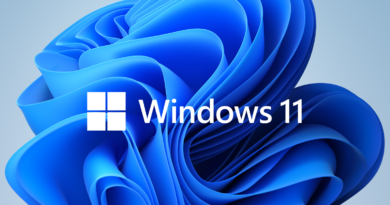GPU-Z for graphics card information
GPU-Z is a free program for obtaining information about the technical characteristics of a video adapter (video card, graphics processor) in the Windows operating system. The GPU-Z program displays complete information about the video card installed on the computer.
A video adapter (graphics accelerator) can be a video card, a video controller, a built-in (integrated) video module. The TechPowerUp GPU-Z program will determine the model of the graphics device, show its characteristics, which the user can use to diagnose or overclock the video adapter (overclocking).
The main features of the GPU-Z program:
- support for video cards NVIDIA, AMD (ATI), Intel;
- comprehensive information about the video card, GPU, frequency, memory type, etc.;
- output of characteristics of sensors in real time.
To download the GPU-Z program, go to the official website of TechPowerUp, the manufacturer of the utility.
The program does not require installation on a computer, GPU-Z can simply be run on a computer using the utility as a portable (portable) application. If necessary, it is possible to install the program on a computer.
After launching the utility, in the window “Install GPU-Z?” select “No” to use the program without installing it on your computer.
Graphics card settings in GPU-Z
The GPU-Z program has three tabs: “Graphic Card”, “Sensors”, “Validation”. There are two buttons in the upper right corner: a button for taking snapshots of the program window (screenshots), and a button for entering the utility settings.
After launching the utility, the TechPowerUp GPU-Z program window will open in the “Graphics Card” tab. Here you will find detailed information about the computer’s video adapter.
My computer has an NVIDIA GeForce GTX 750 Ti graphics card. The program window displays the detailed characteristics of the video card: name, type of graphics processor, its revision, by what process it was manufactured, type and frequency of memory, bus width, device ID (Device ID), processor frequency, default frequency, and other parameters (BIOS version, DirectX version support, etc.).
In order to get detailed information in GPU-Z in Russian, move the mouse cursor to the value displayed by the program. After that, a window with a hint (an explanation of this parameter) will open.
At the bottom of the program window, technologies are displayed: OpenCL, CUDA, PhysX, DirectCompute 5.0, which are supported by this video card.
After clicking on the “Lookup” button, a special web page will open on the TechPowerUp website with detailed characteristics of this video card.
If your computer has several graphics accelerators, then at the bottom of the GPU-Z program window, you can switch between video cards to get information about a different video adapter.
For example, my computer has an integrated video core (Intel HD Graphics 4400) built into the motherboard (Gigabyte).
This window provides complete information about Intel integrated graphics and supported technologies.
The “Sensors” tab displays information received from sensors in real time: GPU frequency, video memory frequency, GPU temperature, cooler (fan) rotation speed, current video memory load, etc.
In the “Validation” tab, you can register to receive an identifier.
GPU-Z Settings
In the “GPU-Z Setting” window, in the “General” tab, you can select the language that works in the prompts, enable the launch of GPU-Z with the start of Windows, select the tab in which the program will open, check for updates, start installing the program on the computer.
In the “Setting” tab, you can change the number of active sensors (enable or disable), the readings of which are taken into account by the GPU Zet program.
The “ASIC Quality” tab gives information about the quality (total power) of the video card, compared with similar video adapters according to the GPU-Z check database, the parameters for interpreting this information are given.
Article Conclusions
The free GPU-Z program is used to get help information about the video adapter (video card) installed on the computer. The GPU-Z program diagnoses the video card to obtain the necessary information that both the average user and the overclocker need to overclock the video card.
